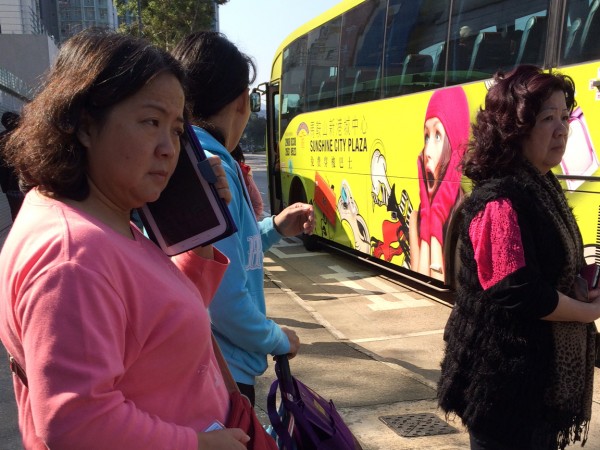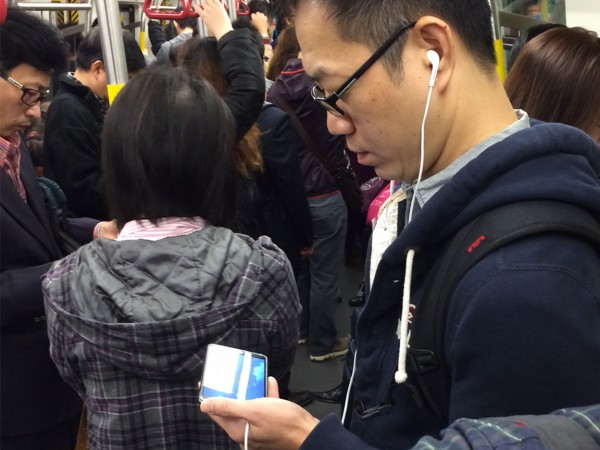As someone who’s spent his life divided between Hong Kong and Canada, I’ve seen and experienced some very interesting differences (and some similarities) between the two places. The differences that I’m talking about extend to conventions in design and user experience. Hong Kong’s compact geography combined with a diverse group of people makes for one concentrated melting pot of technology, geography, demography, and well, just about anything you can think of. While it would be fun to write about all the different dynamics, I’m going to focus on the conventions of design and user experience here.
Let’s start with the lowest common denominator: screens. The first thing I noticed was the size of these things. Sure, larger screens can be popular anywhere but there was an obvious preference for larger screens in Hong Kong. This creates some interesting use cases that we would be less likely to find here in North America. Streaming entire TV series and movies (sometimes while driving/working), extensive gaming, and even the use of a tablet as a phone come to mind. Yes, we can find these examples in North America too, but I would say it’s far more common there. I’ve also noticed a tendency to use larger screen devices for greater legibility, this of course would be more common amongst the older users but it does exist.
Next up, would be OS, and it can basically be broken down to iOS versus Android (there are some very intriguing extensions, but more on that later). In a place where everything comes in an infinite combination of colour and specifications, Android obviously has the upper hand here. Plus, they actually have a selection of phones with larger screens. Users also get apps (like movie streaming apps) that would either take a lot longer or just would not be allowed to make it onto the App store. In addition to this, many mid-sized companies in Hong Kong have their own apps and the Play store is just easier to deal with. When it comes to games, installing an .apk file is fairly straight forward as well and users seem to be ok with the process (with regards to hassle, privacy and security) as long as it’s a something they really want. Yet interestingly enough, there still doesn’t seem to be a clear cut winner between the two operating systems.
As I mentioned in the beginning, a great way to describe Hong Kong is compact. On a telecommunications level, it means getting cell service and coverage to everyone is fairly easy. Not only is the market price competitive, but coverage is available almost everywhere. Yes, that means the subway too (or MTR as it’s called over there), and a lot of time is spent underground in those tubes. While I wouldn’t say that everyone has a data plan, it’s definitely not as expensive and therefore much more common. I won’t ramble on here about the downside of having somewhat of an oligopoly in the telecommunications sector, but I hope I am painting a clearer picture of the situation. In summary, we have a densely populated area with widely accessible, relatively fast internet.
For designers, device type, screen resolution, connectivity, bandwidth, and battery life are all interconnected and affect the design choices we make. What’s interesting is that Hong Kong offers a very different landscape of restrictions than the North American norm. In many ways, it is less restrictive and allows for more “intricate” user experiences. This is where an interesting gap begins to form. For example, mobile apps like Foursquare or Car2go that requires your geolocation via some sort of internet connection would be a lot less fun if you weren’t connected.
The flip side to this is battery life. If everyone is connected all the time, streaming videos, updating apps and gaming online, you would think that battery life would be an issue. Since work hours are longer, I assumed that most devices would simply charge throughout the day. I found that it didn’t necessarily hold true because the day itself was longer, and people were using their devices proportionally more. Enter the external lithium batteries. These also come in about 10 thousand different colours and combinations (approximately).
The different people and cultures that make Hong Kong what it is also makes it one difficult audience to design for. Of course, assuming that there is only “one” audience is always a bold assumption. But the level of competition is really high and I think this can be attributed in part to the population density but also to the culture. One of the reasons why there are so many different variations of the same product is because a lot of it isn’t actually produced by the same manufacturer but instead available as “knock offs” in the aftermarket.
Let’s take a look at Xiaomi. I noticed that their presence was a lot greater than when I last visited in early 2013. Back then, I had heard of them but didn’t really pay much attention to it. This time around, they’re being called the “Apple of China”, their extension of Android’s OS (MIUI) is gaining momentum, and their products are in high demand. Their website is a great example of the per-audience differences I’m talking about. The first thing I noticed when I landed on the page was obviously the design of the page: simple, lots of white space, large HD photos, with a generally modern feel to it. Then, I noticed the language drop down.
Copy aside, there are clear visual/design differences between the English, Simplified Chinese, and Traditional Chinese versions of the site, to the point that they are essentially different sites.
What’s also interesting here are the behaviour of links: no matter what version of the site you’re viewing, all links open in new tabs. This was something that I noticed when I worked in Shanghai and when I visited Chinese sites. I think the use of browser tabs as a natural navigational bread crumb stems from older Chinese sites that typically have a lot more links on a given page compared to the typical website designs we see over here in North America. I think it actually works quite well in some cases. I know this may seem minimal at first, but to me it feels like this may be the start of a trail and I’m interested to see what it may lead me to.
To some extent, I feel like Hong Kong today is a physical manifestation of the open web; in fact, it offers a natural depiction of why silos don’t work. With so many people so close to each other, ideas and products can develop really fast but also burn out just as fast. This makes sustained growth and continuity even harder to achieve. Trying to keep users confined without a reasonable alternative just doesn’t seem to work in the long run.
These different conventions to UX and design are very interesting to say the least. Personally, these types of things are compelling to think about. But, as a designer I feel obligated to be aware of as much as I can and when it’s a whole third of the world, it’s just nice to know.


